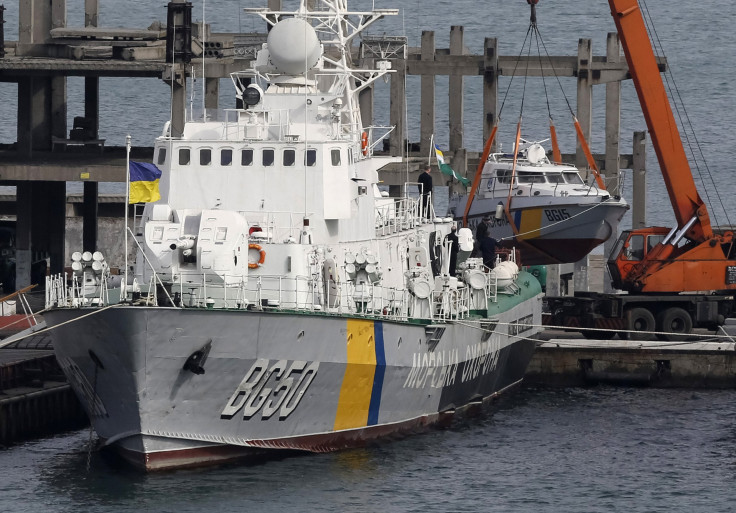Is Ukrainian Navy Training With Underwater Minesweepers To Counter Russian-Mined Waters?

KEY POINTS
- The SeaFox-I, manufactured by Atlas Elektronik, is described as a fiber-optic guided one-shot semi-autonomous ROV
- Its primary purpose is to identify pre-placed underwater objects
- The components of the system include a small sonar, an optical sensor, four propellers and one thruster
Ukrainian navy personnel were seen in photos, shared on social media, engaging in training exercises with unmanned underwater minesweeper drones, utilizing a decommissioned Royal Navy vessel. The objective of these training sessions is to address the issue of extensive mining by Russia in the seas surrounding Ukraine's Black Sea ports. These mines have had a detrimental impact on grain shipments and agricultural trade, prompting Kyiv to take steps toward demining the affected areas.
The specific unmanned underwater vehicle (UUV) being employed in the training exercises is the SeaFox-I, which was originally utilized by the Royal Navy. It is now being utilized by Ukrainian navy personnel to aid in demining operations. The former Royal Navy vessel involved in the training exercises has been identified as the M110 Ramsey, according to Eurasian Times.
M110 Ramsey has been rechristened as the M310 Chernigiv, as indicated by a picture shared on social media platforms, including Twitter, and subsequently circulated on various Russian and Ukrainian Telegram groups on June 30.
Although the SeaFox system was not explicitly mentioned in official announcements regarding armament transfers to Ukraine, the British government had previously stated its intention to provide underwater drones to Kyiv in August 2022. It is possible that the SeaFox system is part of the overall underwater drone package being sent to Ukraine to bolster their capabilities in mine clearance operations.
However, International Business Times cannoti independently verify the claims.
The SeaFox-I, manufactured by Atlas Elektronik, is described as a fiber-optic guided one-shot semi-autonomous Remotely Operated Vehicle (ROV). Its primary purpose is to identify pre-placed underwater objects. The vehicle utilizes fiber-optic guidance technology and operates in a semi-autonomous manner, enabling it to navigate underwater environments and carry out its mission to detect and identify submerged objects effectively.
The SeaFox-I system comprises several components, including a small sonar, an optical sensor, four propellers and one thruster. These elements work together to facilitate the operation and maneuverability of the SeaFox ROV underwater.
The images, recently shared on social media, depicted the SeaFox-I being operated from aboard the Chernigiv minesweeper boats of the Ukrainian Navy, which were previously known as the HMS Ramsey during their tenure in the Royal Navy. The Ramsey was a part of the Sandown-class minehunters, which were officially decommissioned from the Royal Navy service in the first week of August 2021 following 21 years of active duty.
According to a report by Naval Post at the time, following their decommissioning from the Royal Navy, the Ramsey and its sister ship Blyth were sent for further work before being transferred to the Ukrainian Navy.
Last year, both Ukraine and Russia engaged in a series of accusations against each other regarding the mining of waters and the subsequent threat posed to civilian trade shipping.
Russia strongly denied the accusations and instead pointed fingers at Ukraine, alleging that the mines laid by Kyiv had become disconnected from their cables and drifted away from their original positions in the Black Sea. Russia specifically claimed that Ukraine had deployed approximately 420 mines near the entrances to Odesa, Ochakov, Chernomonsk, and Yuzny.
© Copyright IBTimes 2024. All rights reserved.











